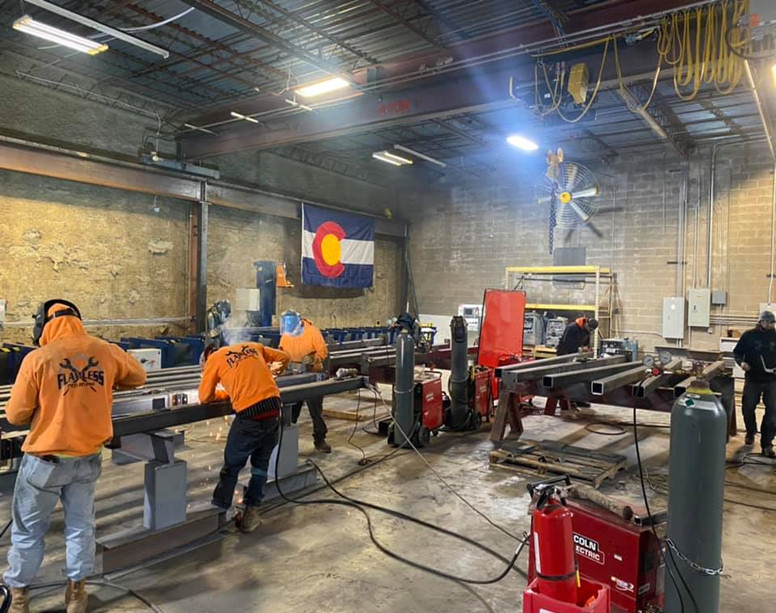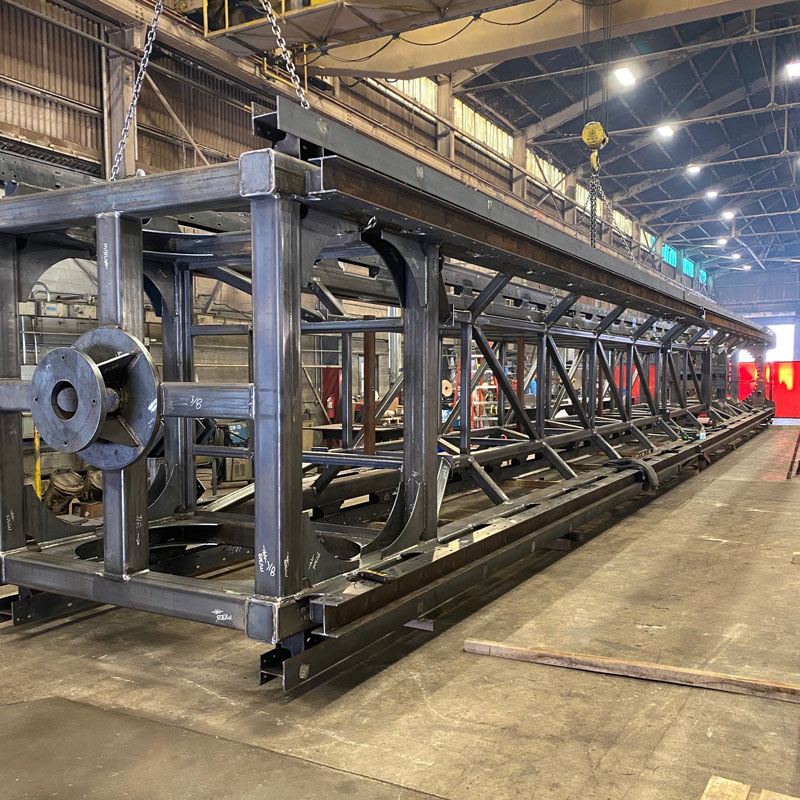Comprehensive Evaluation of Cutting-Edge Techniques in Steel Manufacture Sector
As the steel fabrication industry proceeds to develop, the integration of sophisticated techniques has come to be important for remaining affordable and fulfilling the demands of contemporary production standards. In this vibrant industry where modern technology plays a crucial function, comprehending the nuances of these sophisticated techniques is not just an alternative however a requirement for those looking to build ahead in the ever-evolving world of steel construction.
Laser Reducing Improvements
In the realm of steel fabrication, laser reducing improvements have actually changed the accuracy and efficiency of steel shaping processes. By using the power of concentrated laser light beams, suppliers can now attain exceptional levels of accuracy when reducing via various types of steels. This technology makes it possible for complex layouts to be executed with minimal material waste, making it an affordable solution for industries requiring high accuracy parts.
One of the crucial advantages of laser cutting is its capability to deal with a variety of materials, consisting of stainless-steel, light weight aluminum, and carbon steel, effortlessly. The process produces tidy, burr-free edges, getting rid of the need for additional completing steps. The non-contact nature of laser reducing lowers the threat of material contamination, resulting in higher quality end items.
Moreover, laser cutting devices can be configured to make swift, specific cuts, dramatically minimizing manufacturing time compared to conventional cutting methods. This rate and precision make laser cutting specifically ideal for automation settings where effectiveness is paramount. As modern technology remains to advance, laser cutting is positioned to play a progressively essential duty in the steel manufacture sector.

CNC Machining Innovations
The development of CNC machining innovations has actually ushered in a brand-new era of precision and efficiency in the steel construction industry. Computer System Numerical Control (CNC) makers have revolutionized steel construction by using exceptional precision and repeatability in the production process. steel fixing. Among the crucial innovations in CNC machining is the assimilation of sophisticated software program systems that allow real-time tracking and adjustments, causing boosted efficiency and quality control
In addition, the growth of multi-axis CNC makers has permitted the construction of intricate steel elements with intricate styles that were previously testing to produce. These machines can carry out a vast array of machining procedures, consisting of milling, exploration, transforming, and grinding, all with high levels of accuracy.
Furthermore, the consolidation of automation and robotics in CNC machining has structured manufacturing procedures, reduced lead times, and reduced the margin of error. This combination of cutting-edge innovations not just boosts effectiveness but likewise makes certain regular high quality throughout all fabricated steel parts. To conclude, CNC machining technologies remain to drive advancements in the steel construction market, establishing new requirements for accuracy and efficiency.
Automated Welding Technologies
Automated welding technologies have revolutionized the steel construction industry, enhancing performance and precision in the welding procedure. These cutting-edge technologies utilize computer-controlled systems to automate the welding procedure, causing higher efficiency degrees and boosted weld high quality. One of the key benefits of automated welding is the ability to do intricate welds with regular precision, minimizing the possibility of errors and rework.
Robotic welding systems go to the forefront of automated welding visit the site modern technologies, providing unparalleled speed and accuracy. These systems can handle a vast range of welding jobs, from straightforward to complex, easily (Alpha reo). By using innovative sensing units and software application, robot welders can adjust to variants in product and joint geometry, guaranteeing an uniform and trustworthy weld
Additionally, automated welding technologies enhance workplace security by lessening the direct exposure of human welders to harmful fumes and intense heat. As the steel manufacture market proceeds to advance, including automated welding modern technologies will be vital for business aiming to stay affordable and satisfy the expanding needs for high-quality welded products.
Robotics Assimilation in Construction
Making use of robotic systems in manufacture processes has actually ended up being a pivotal strategy for boosting efficiency and accuracy in modern-day production settings. Robotics assimilation in steel construction supplies a myriad of advantages, including enhanced performance, boosted top quality control, and enhanced precaution. These innovative robot systems are geared up with innovative sensors and shows abilities, allowing them to do elaborate tasks with a high degree of accuracy and repeatability.
Among the vital advantages of robotics assimilation in steel manufacture is the capability to automate recurring tasks, such as material handling, reducing, welding, and assembly procedures. This not only quickens manufacturing cycles yet likewise reduces the danger of human error, resulting in greater overall product top quality. Additionally, robots can operate 24/7, significantly enhancing manufacturing result and meeting limited task deadlines.

3D Printing in Steel Production
Having actually reinvented the steel manufacture industry through robotics assimilation, the burgeoning exploration of 3D printing in steel manufacturing is poised to more development the realm of modern production strategies. 3D printing, likewise called additive production, provides extraordinary layout liberty and complexity, allowing the production of elaborate steel frameworks that were formerly unattainable via traditional production techniques. By utilizing computer-aided style (CAD) software program, suppliers can exactly regulate the layer-by-layer deposition of steel product, resulting in components with enhanced capabilities and geometries.
One of the key benefits of 3D printing in steel manufacturing is its capability to reduce product waste significantly. Unlike subtractive manufacturing processes where excess material is cut away, 3D printing only utilizes the needed amount of steel required description for the final component. This efficiency not only leads to cost financial savings yet also lines up with lasting production practices by lessening environmental impact.
Furthermore, 3D printing enables quick prototyping and modification, enabling the manufacturing of little batches of intricate steel elements with short preparations. As the technology remains to grow and end up being much more available, its assimilation right into mainstream steel construction processes is anticipated to drive innovation and effectiveness throughout the market.
Conclusion
In conclusion, the steel manufacture industry has seen significant go now developments in strategies such as laser cutting, CNC machining, automated welding, robotics combination, and 3D printing. These innovative innovations have actually transformed the method steel products are manufactured, causing boosted cost-effectiveness, precision, and efficiency. Continued financial investment in these ingenious techniques is important for the sector to remain affordable and meet the demands of contemporary production processes.
As the steel manufacture industry continues to progress, the combination of innovative techniques has ended up being essential for staying affordable and meeting the demands of contemporary production criteria.One of the crucial advantages of laser cutting is its ability to manage a large array of materials, including stainless steel, aluminum, and carbon steel, with ease.Automated welding modern technologies have actually revolutionized the steel fabrication industry, enhancing effectiveness and precision in the welding procedure.Having actually transformed the steel fabrication sector via robotics assimilation, the blossoming expedition of 3D printing in steel production is poised to more advance the world of contemporary production methods.In verdict, the steel manufacture market has actually seen significant developments in methods such as laser cutting, CNC machining, automated welding, robotics assimilation, and 3D printing.